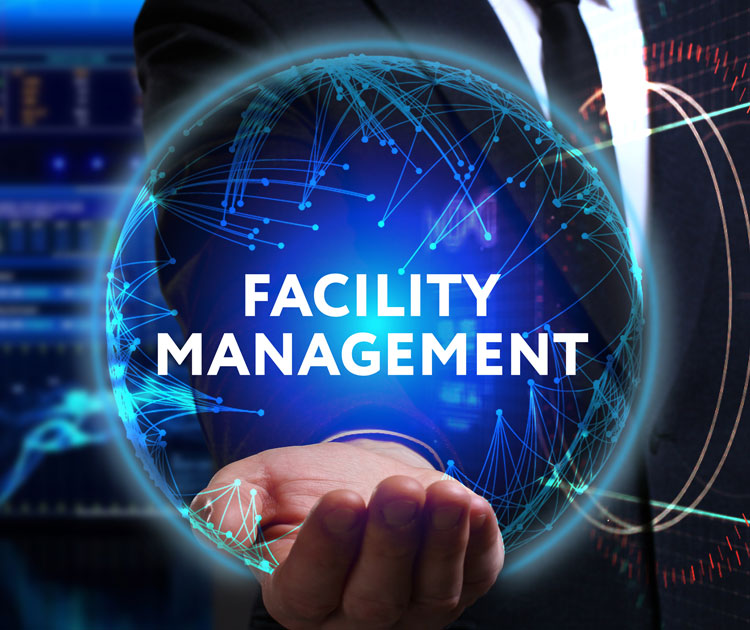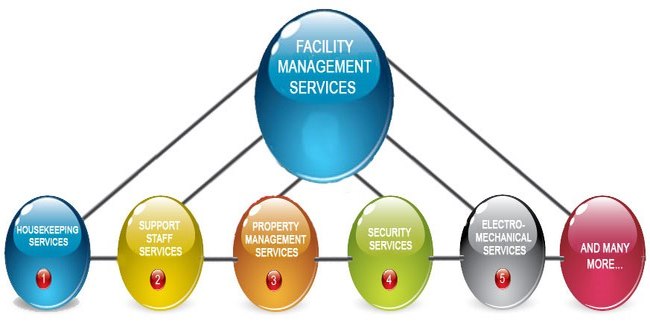Ideal Practices for Streamlining Facility Management Processes and Protocols
Ideal Practices for Streamlining Facility Management Processes and Protocols
Blog Article
The Essential Guide to Facility Management: Strategies for Success
Center management plays a crucial function in the general success of an organization, serving as the backbone that supports effectiveness, safety, and performance. The subtleties of effective facility management prolong beyond plain logistics and call for a thorough understanding of both measurable and qualitative metrics.
Comprehending Facility Management
What comprises efficient facility monitoring? Efficient facility management encompasses the coordination of various organizational features to guarantee that built settings are risk-free, efficient, and helpful to performance. Facility Management. It incorporates the principles of organization, design, and design administration to develop a smooth operational flow within a company
Crucial element of facility administration include area preparation, maintenance administration, and compliance with health and wellness regulations. Area preparation concentrates on maximizing using physical sources to sustain organizational objectives, while maintenance monitoring guarantees that facilities are kept in ideal condition, making best use of lifespan and decreasing operational expenses. Conformity with lawful and regulative requirements is important, as it safeguards the company against prospective obligations and improves its track record.
Moreover, effective center management depends on the tactical usage of technology, such as Structure Management Solution (BMS) and Computer-Aided Facility Monitoring (CAFM) tools. These modern technologies promote real-time surveillance of structure systems and improve upkeep procedures. Eventually, a thorough method to facility management not just advertises functional effectiveness but also promotes a favorable environment for workers and site visitors alike, driving total business success.
Secret Strategies for Optimization
Maximizing facility administration calls for a critical method that straightens functional exercise with organizational goals. To achieve this, the initial crucial technique is the application of incorporated technological solutions. Using advanced software program systems permits real-time monitoring of center procedures, promoting data-driven decision-making and enhancing overall efficiency.
Secondly, regular analyses of facility performance are essential. Conducting routine examinations and audits allows facility supervisors to identify locations that require renovation, guaranteeing that resources are designated efficiently. This aggressive method aids in lessening downtime and enhancing solution shipment.
Another vital strategy is fostering partnership across departments. By urging open communication in between teams, center managers can better align their approaches with business objectives, causing boosted functional synergy. Furthermore, involving staff in training programs promotes a culture of accountability and improves their capacity to add to optimization initiatives.
Enhancing Safety And Security Methods
Reinforcing security protocols is crucial for producing a safe setting within facilities. A comprehensive safety and security protocol not only secures workers and visitors however additionally improves operational performance. To attain this, facility supervisors must conduct routine danger evaluations to determine prospective threats and ensure that proper actions are in place.
Training and education are important parts of effective safety and security protocols - Facility Management. Employees ought to receive recurring training in emergency situation treatments, tools handling, and individual safety procedures. Routine drills, such as fire evacuations or lockdown procedures, foster familiarity and preparedness among team
Furthermore, clear communication channels have to be established to report security problems without delay. This consists of developing an recommended you read accessible platform for workers to voice prospective dangers or occurrences without worry of reprisal. Moreover, leveraging modern technology can improve safety measures; as an example, executing monitoring systems and access controls aids monitor center tasks and restrict unauthorized access.
Finally, compliance with regional policies and market standards is non-negotiable. Normal audits and reviews of security procedures guarantee alignment with present regulations and finest methods. By prioritizing these strategies, center supervisors can cultivate a culture of safety and security that secures all stakeholders and ultimately adds to the company's success.
Improving Office Setting

Ergonomic considerations are vital to reduce physical pressure and discomfort. Facility Management. This entails offering adjustable furniture, proper lights, and ample space for motion. These modifications can lead to minimized absence and increased work satisfaction
Visual appeals play an essential role in forming the office environment. Utilizing color psychology, natural illumination, and plant can cultivate a stimulating and welcoming setting. Attentively made spaces can enhance imagination and enhance general health.
In addition, urging staff member involvement through comprehensive decision-making processes can enhance the sense of possession and belonging. Collecting responses on work environment improvements and entailing employees in the design procedure can lead to a much more tailored atmosphere that fulfills their needs.
Finally, promoting health campaigns, such as health cares and leisure spaces, can additionally add to a supportive work environment culture. By focusing on these approaches, facility managers can efficiently boost the office atmosphere, driving both employee satisfaction and organizational success.
Determining Success in Facilities
Determining success in center management requires an extensive strategy that assesses both qualitative and measurable metrics. Measurable metrics normally include key efficiency indicators (KPIs) such as room application prices, energy usage, upkeep prices, and tenancy degrees. These metrics supply a clear photo of operational efficiency and monetary performance, enabling center supervisors to identify areas for enhancement and benchmark versus sector standards.
Qualitative metrics, on the other hand, concentrate on user contentment and employee engagement. Surveys and responses systems can determine exactly how well the centers satisfy the needs of owners, helping to analyze the overall office setting. This aspect is critical, as a pleased labor force is frequently connected to increased productivity and retention rates.
To effectively gauge success, facility supervisors should additionally think about incorporating modern technology, such as constructing administration systems and information analytics tools, to gather and analyze appropriate data. Regularly reviewing both sets of metrics enables for a much more well balanced sight of performance and informs strategic decisions. Ultimately, an effective facility management strategy depends upon a dedication to continual renovation, making certain that both operational efficiencies and customer satisfaction are have a peek at these guys prioritized.
Conclusion

Center management plays a critical role in the total success of an organization, offering as the backbone that supports efficiency, safety and security, and effectiveness.Key components of facility management include space preparation, upkeep administration, and conformity with health and wellness and safety policies.Additionally, efficient facility monitoring relies on the strategic use of technology, such as Building Administration Solution (BMS) and Computer-Aided Facility Monitoring (CAFM) devices. Eventually, a detailed technique to center administration not only advertises functional efficiency but additionally fosters a favorable atmosphere for employees and visitors alike, driving general organizational success.
Eventually, an effective center administration approach pivots on a commitment to continuous enhancement, guaranteeing that both functional performances and individual complete satisfaction are prioritized.
Report this page